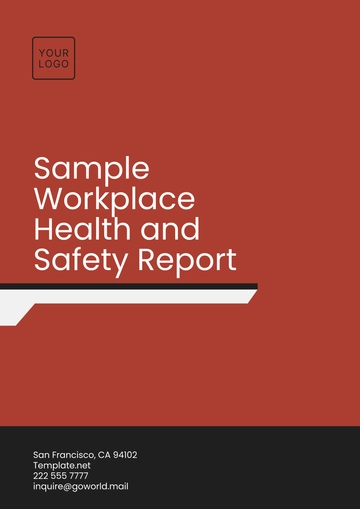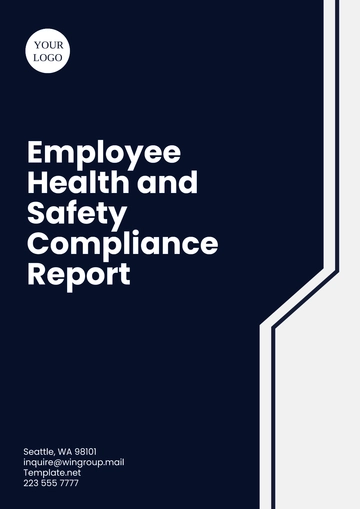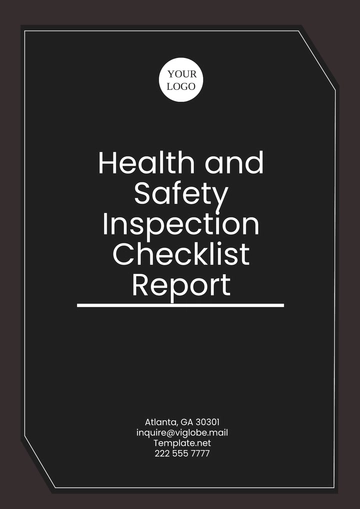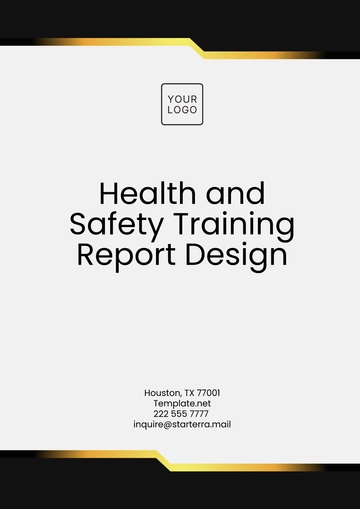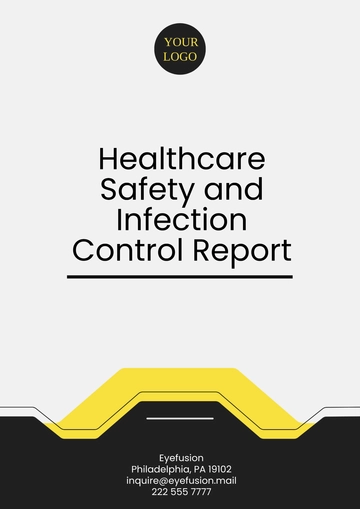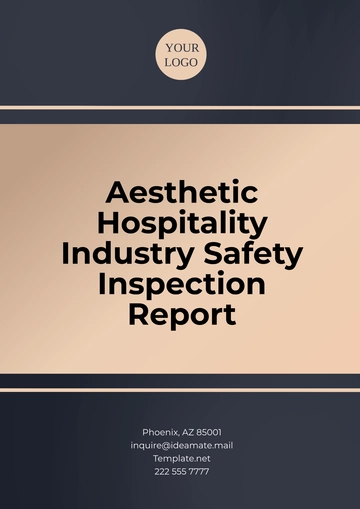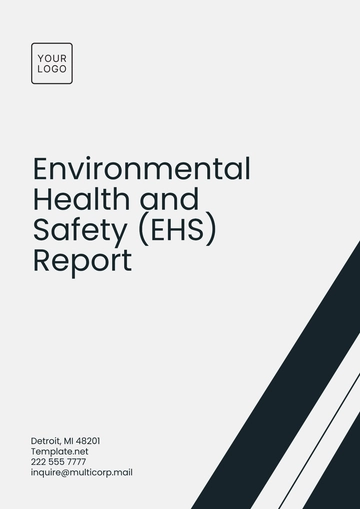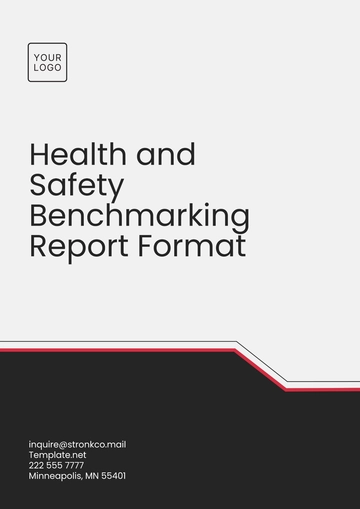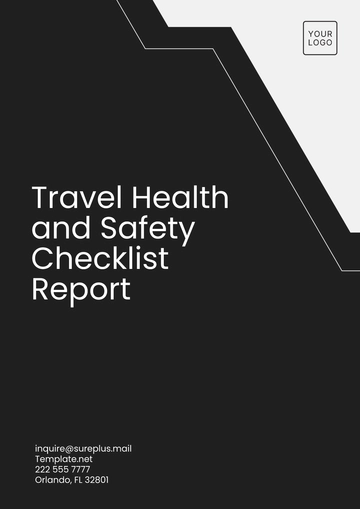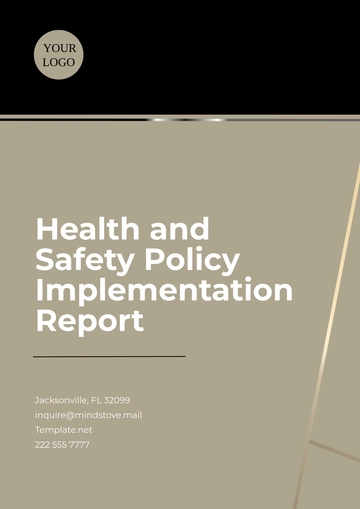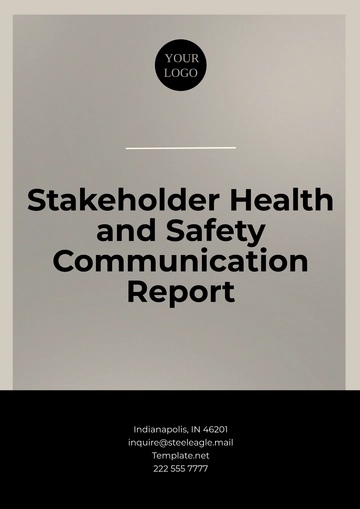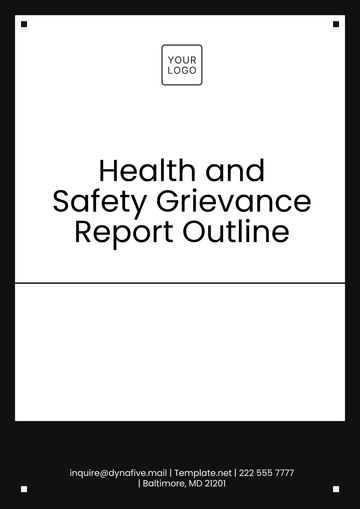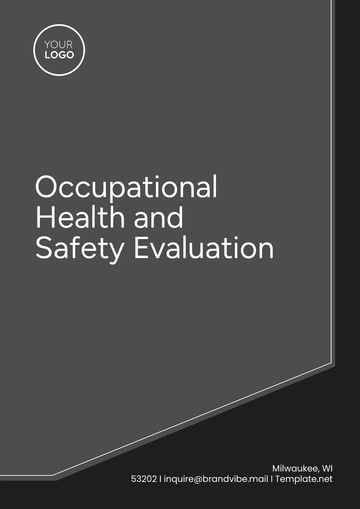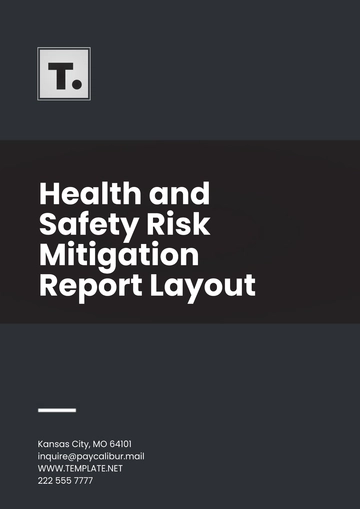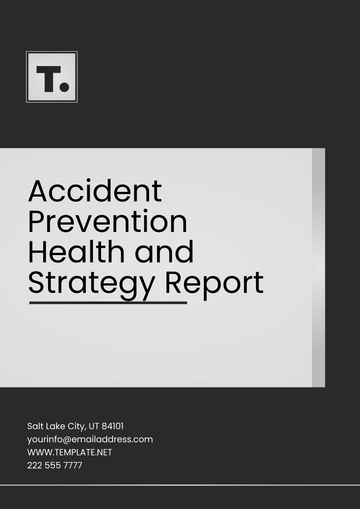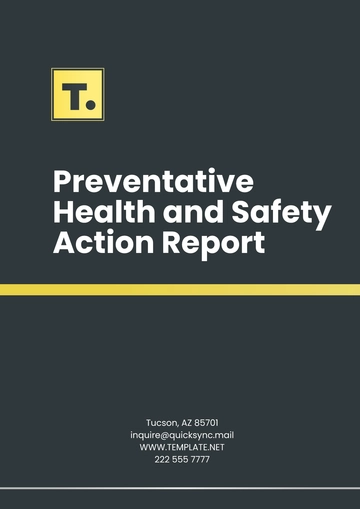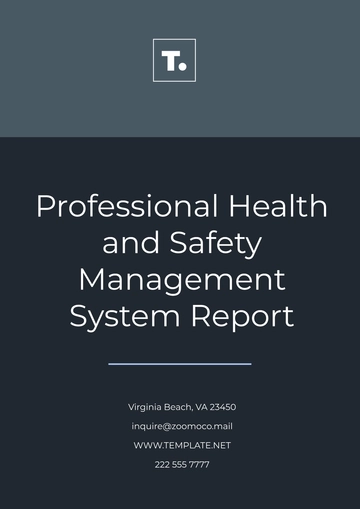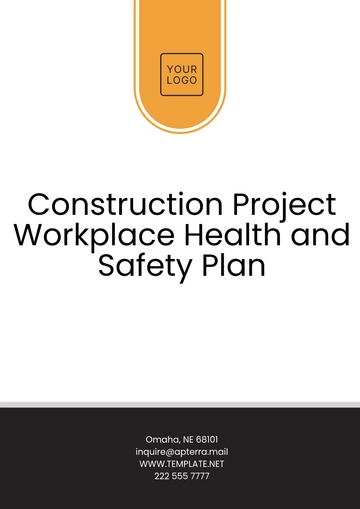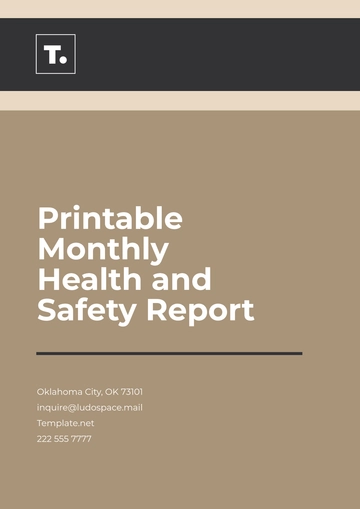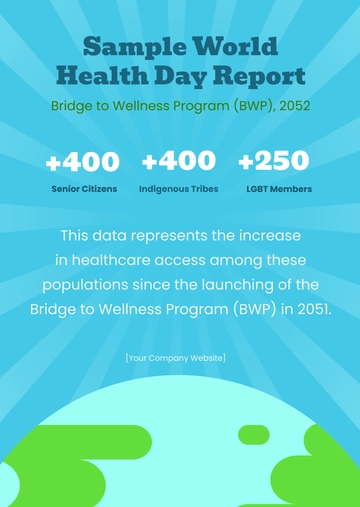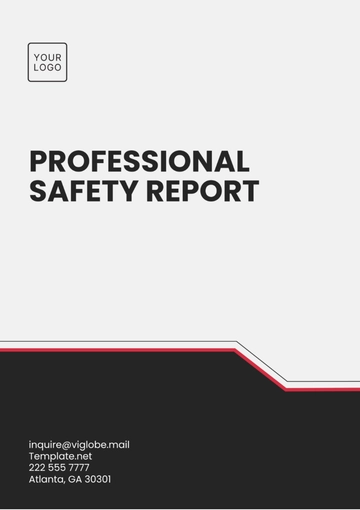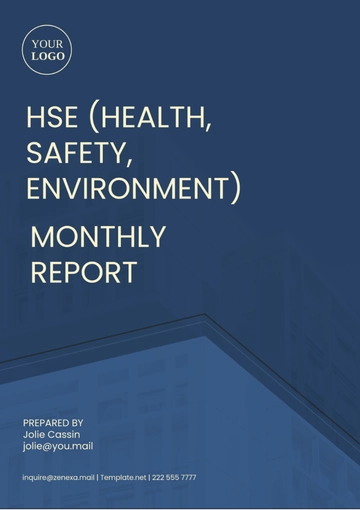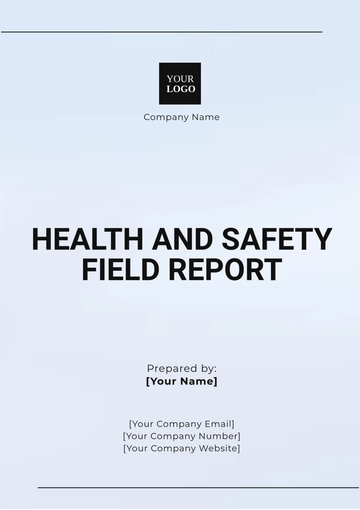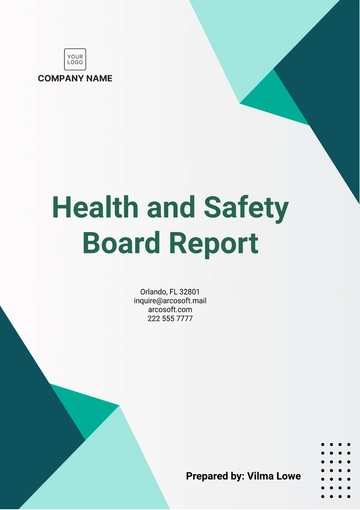Free Annual Safety Compliance Report

Executive Summary
A. Overview
The year 2050 marked another significant milestone for [Your Company Name] in its commitment to safety and compliance. Throughout this period, the company dedicated substantial resources to maintaining a secure and compliant working environment. We continued to foster a culture of safety among our employees, with the ultimate goal of achieving an incident-free workplace.
B. Key Highlights
1. Total Lost Time Incidents: During 2050, we recorded 12 lost time incidents. These incidents were thoroughly investigated, and corrective measures were implemented to prevent recurrence. This number represents a 20% improvement compared to the previous year.
2. Total Near Misses Reported: Our employees reported 45 near misses, indicating increased awareness and proactive hazard identification within our workforce.
3. Safety Training Completion Rate: We conducted 85 safety training sessions with an impressive completion rate of 92%, underscoring our dedication to enhancing employee safety knowledge.
4. Regulatory Compliance Score: Our commitment to compliance resulted in a compliance score of 98%, signifying our alignment with industry regulations.
5. Employee Engagement Score: We achieved an employee engagement score of 88%, reflecting a positive shift in our safety culture and the active involvement of our employees in safety-related activities.
C. Recommendations
Based on the findings, we recommend the following actions for further improvement:
Enhancing safety training programs to cover emerging risks.
Strengthening our incident reporting and investigation procedures to identify root causes effectively.
Continuously monitoring and staying updated with safety regulations to ensure compliance in a dynamic regulatory environment.
Safety Performance Overview
A. Safety Goals and Objectives
In 2050, [Your Company Name] set ambitious safety goals and objectives, including:
Reducing lost time incidents by 20%.
Achieving a 30% improvement in near-miss reporting.
Ensuring 95% of employees complete advanced safety training courses.
Obtaining a regulatory compliance score of 98%.
B. Incidents and Accidents
During the reporting period, we experienced a total of 12 recordable incidents, leading to 60 lost workdays. These incidents ranged from minor injuries to more severe accidents. Each incident was thoroughly investigated, and corrective actions were implemented to prevent recurrence. Notably, the 20% reduction in lost time incidents compared to the previous year is a significant achievement.
C. Near Misses
Our employees reported 45 near misses during 2050, indicating that our safety culture encourages proactive hazard identification and reporting. These near misses were investigated, and necessary preventive measures were taken to mitigate potential risks.
D. Training and Awareness
[Your Company Name] conducted 85 safety training sessions during the year, covering a wide range of safety topics. These sessions had an impressive completion rate of 92%, reflecting the commitment of our employees to enhancing their safety knowledge.
E. Safety Inspections and Audits
Throughout 2050, we conducted 30 safety inspections and audits across our facilities. These assessments helped identify potential hazards and non-compliance issues. We addressed 25 findings promptly to maintain a safe working environment.
Compliance with Regulations
A. Regulatory Framework
[Your Company Name] operates within the framework of Regulatory Bodies. A comprehensive review of regulatory requirements was undertaken to ensure that our operations align with these regulations.
B. Compliance Assessment
The company achieved a regulatory compliance score of 98% after a thorough assessment. This score reflects our unwavering commitment to adhering to safety regulations and standards. Our compliance efforts were validated through regular internal audits and inspections, as well as external assessments conducted by regulatory authorities. Notably, we proactively addressed any compliance gaps, demonstrating our dedication to maintaining a high level of compliance.
C. Regulatory Updates
Throughout 2050, there were several significant regulatory updates that had an impact on our operations. Notably, the specific regulations or changes, and our team promptly responded by assessing the implications on our processes and procedures. We made necessary adjustments to ensure full compliance with the updated regulations, including revising safety protocols, conducting additional training, and updating safety manuals.
Safety Initiatives and Programs
A. Safety Initiatives Implemented
During the reporting period, [Your Company Name] implemented a series of impactful safety initiatives designed to further enhance workplace safety. Some key initiatives include:
1. "Safety First" Campaign: We launched a company-wide "Safety First" campaign aimed at raising safety awareness among all employees. This campaign included safety workshops, informative posters, and safety-related communications.
2. Safety Committee: To address safety concerns and drive continuous improvement, we established a Safety Committee composed of representatives from different departments. This committee met regularly to review safety performance, discuss safety suggestions, and make recommendations for improvement.
3. Advanced Safety Technology: We invested in advanced safety technology, such as real-time monitoring systems, to mitigate risks and respond swiftly to potential incidents. This technology has improved our ability to detect and address safety issues promptly.
B. Employee Engagement
Our commitment to fostering a culture of safety was reflected in the increased engagement of our employees in safety-related activities. The employee engagement score reached 88%, indicating a positive shift in our safety culture.
Employees actively participated in safety meetings, hazard reporting, and safety drills. Their proactive involvement has been a driving force behind our continuous improvement in safety performance.
C. Safety Awards and Recognition
In recognition of our unwavering dedication to safety, [Your Company Name] received the prestigious Safety Award in 2051 for outstanding safety performance within our industry. Additionally, several employees were recognized individually for their outstanding contributions to maintaining a safe working environment through their commitment to safety protocols, hazard reporting, and proactive safety initiatives.
Health and Safety Data
A. Employee Health and Safety
Maintaining the health and safety of our employees is a top priority for [Your Company Name]. In 2050, we recorded the following key health and safety data:
1. Total Recordable Injuries: There were 18 recordable injuries among employees during the year. This includes incidents ranging from minor cuts and bruises to more severe injuries. All cases were promptly reported, investigated, and treated.
2. Occupational Illnesses: We reported 4 occupational illnesses during the year. These cases were thoroughly examined, and appropriate measures were taken to prevent further occurrences.
3. Lost Workdays: A total of 120 workdays were lost due to injuries and illnesses. Our focus remains on reducing this number through proactive safety measures and robust incident reporting.
B. Environmental Impact
[Your Company Name] is committed to minimizing its environmental impact. During the reporting period, we made progress in the following areas:
1. Waste Reduction: We reduced waste production by 15% through improved recycling programs and waste reduction initiatives.
2. Energy Efficiency: Our energy-efficient practices resulted in a 10% reduction in energy consumption compared to the previous year.
3. Carbon Emissions: We achieved a 20% reduction in carbon emissions through the use of renewable energy sources and energy-efficient technologies.
C. Product Safety
[Your Company Name] takes product safety seriously to ensure that our products meet the highest safety standards. In 2050:
1. Product Recalls: We had 2 product recalls during the year. All recalls were initiated promptly upon identifying potential safety issues, and affected products were removed from the market.
2. Product Safety Testing: Rigorous product safety testing and quality control measures continued to be a cornerstone of our manufacturing process, ensuring that our products meet or exceed safety regulations.
Emergency Response and Preparedness
A. Emergency Response Plan
[Your Company Name] maintains a comprehensive Emergency Response Plan to address various scenarios, including natural disasters, chemical spills, and workplace incidents. In 2050, we updated our Emergency Response Plan to include improved communication protocols and increased training for emergency response teams.
B. Incident Management
Throughout the year, we managed 24 incidents, ranging from minor workplace accidents to environmental spills. These incidents were managed efficiently, with an average response time of 15 minutes. Effective mitigation measures were implemented to minimize their impact.
C. Evacuation Drills
To ensure that employees are well-prepared in the event of an emergency, we conducted 6 evacuation drills at our facilities. These drills helped assess the readiness of our employees and identified areas for improvement in our evacuation procedures.
Recommendations and Action Plan
A. Areas for Improvement
Based on our safety performance in 2050 and the insights gained, we have identified several key areas for improvement:
1. Incident Reduction
While we achieved a 20% reduction in lost time incidents, there is room for further improvement. We will focus on:
Enhancing incident reporting mechanisms to encourage more reporting.
Conducting in-depth incident investigations to identify root causes and prevent recurrence.
2. Near-Miss Reporting
Though near-miss reporting increased, we aim to further foster a culture of proactive reporting. We will:
Implement an incentive program to encourage employees to report near misses.
Conduct regular safety workshops to educate employees on the importance of near-miss reporting.
3. Environmental Sustainability
While we reduce waste and carbon emissions, we are committed to greater sustainability. We plan to:
Explore renewable energy options to further reduce our carbon footprint.
Collaborate with suppliers to minimize packaging waste.
4. Product Safety
To minimize product recalls, we will:
Invest in advanced product testing technologies.
Enhance supplier quality control processes to ensure the safety of raw materials.
B. Action Plan for Next Year
To address the identified areas for improvement and continue our commitment to safety and compliance, we have developed an action plan for the year [2051]. Key initiatives include:
1. Incident Reduction
Launching a comprehensive safety awareness campaign to encourage incident reporting.
Increasing the frequency of safety training sessions focused on incident prevention.
2. Near-Miss Reporting
Introducing an employee recognition program for proactive near-miss reporting.
Conducting monthly safety drills to enhance hazard identification skills.
3. Environmental Sustainability
Initiating a renewable energy feasibility study for our facilities.
Collaborating with suppliers to implement sustainable packaging solutions.
4. Product Safety
Investing in state-of-the-art product testing equipment.
Strengthening supplier partnerships through joint safety initiatives.
- 100% Customizable, free editor
- Access 1 Million+ Templates, photo’s & graphics
- Download or share as a template
- Click and replace photos, graphics, text, backgrounds
- Resize, crop, AI write & more
- Access advanced editor
Ensure regulatory diligence with the Annual Safety Compliance Report Template from Template.net. Structured for creating an annual report detailing your organization's compliance with safety standards and regulations, it's essential for documenting adherence, identifying compliance gaps, and planning improvements. Download now to prepare an informative and comprehensive annual safety compliance report.
You may also like
- Sales Report
- Daily Report
- Project Report
- Business Report
- Weekly Report
- Incident Report
- Annual Report
- Report Layout
- Report Design
- Progress Report
- Marketing Report
- Company Report
- Monthly Report
- Audit Report
- Status Report
- School Report
- Reports Hr
- Management Report
- Project Status Report
- Handover Report
- Health And Safety Report
- Restaurant Report
- Construction Report
- Research Report
- Evaluation Report
- Investigation Report
- Employee Report
- Advertising Report
- Weekly Status Report
- Project Management Report
- Finance Report
- Service Report
- Technical Report
- Meeting Report
- Quarterly Report
- Inspection Report
- Medical Report
- Test Report
- Summary Report
- Inventory Report
- Valuation Report
- Operations Report
- Payroll Report
- Training Report
- Job Report
- Case Report
- Performance Report
- Board Report
- Internal Audit Report
- Student Report
- Monthly Management Report
- Small Business Report
- Accident Report
- Call Center Report
- Activity Report
- IT and Software Report
- Internship Report
- Visit Report
- Product Report
- Book Report
- Property Report
- Recruitment Report
- University Report
- Event Report
- SEO Report
- Conference Report
- Narrative Report
- Nursing Home Report
- Preschool Report
- Call Report
- Customer Report
- Employee Incident Report
- Accomplishment Report
- Social Media Report
- Work From Home Report
- Security Report
- Damage Report
- Quality Report
- Internal Report
- Nurse Report
- Real Estate Report
- Hotel Report
- Equipment Report
- Credit Report
- Field Report
- Non Profit Report
- Maintenance Report
- News Report
- Survey Report
- Executive Report
- Law Firm Report
- Advertising Agency Report
- Interior Design Report
- Travel Agency Report
- Stock Report
- Salon Report
- Bug Report
- Workplace Report
- Action Report
- Investor Report
- Cleaning Services Report
- Consulting Report
- Freelancer Report
- Site Visit Report
- Trip Report
- Classroom Observation Report
- Vehicle Report
- Final Report
- Software Report

